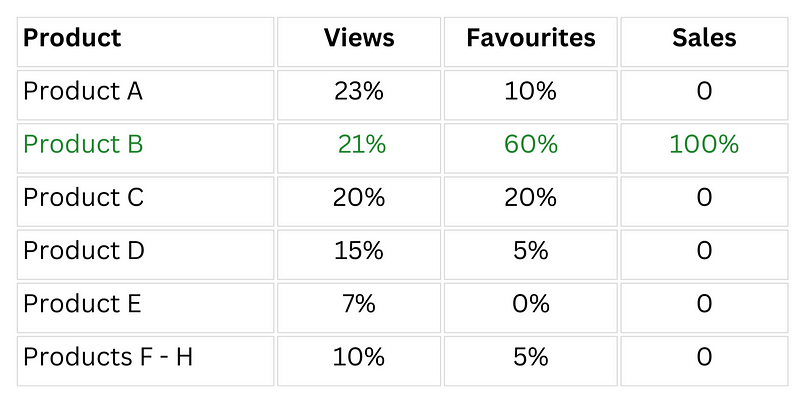Transforming Side Hustles into Lean Agile Mastery
Written on
Chapter 1: The Learning Journey
In my quest to start a passive income venture, I've discovered invaluable insights that have sharpened my lean agile product development skills. This journey has allowed me to apply theory in a real-world setting with minimal risk. Here are six essential lessons from my experience:
MVPs Can Be Humbling
I began with the simplest products possible, adhering to the agile philosophy. It was a tough pill to swallow—those MVPs were far from impressive. I felt a wave of embarrassment, to the extent that I hesitated to share my store link with friends and family. The fear of disappointing customers lingered heavily on my mind.
Learning #1 — Empathy:
Understand your stakeholders' concerns. If they resist launching an MVP, it’s likely because they genuinely care about their customers and brand integrity.
Embrace ETPs Instead
Shifting my perspective to focus on the Earliest Testable Product (ETP) made a significant difference. I realized that I wasn’t just releasing products for customers’ approval; I was testing their interest.
I launched eight low-fidelity products and only two sold within two months. While that may appear to be a failure, I gathered a wealth of data without significant costs. The principle of getting low-effort products in front of users proved beneficial.
I’ve now transitioned to phase two of my ETPs, using insights from my most successful content to introduce new offerings like mugs and coasters through a Print On Demand service, allowing for more creative experimentation.
Learning #2 — Testable over Viable:
The key during the early stages of product development is learning—what customers want and what they are willing to purchase. Viability will naturally follow as you acquire knowledge and skills.
User Data Reigns Supreme
Among my initial eight products, I had favorites that I believed would resonate well with customers. However, the least time-consuming creation outperformed them in both favorites and sales.
By closely analyzing user data, I identified trends and preferences that guided my next steps.
Learning #3 — Objectivity:
Rely on facts rather than assumptions. Just because you’ve conducted extensive research doesn’t guarantee accurate predictions of market performance.
Output vs. Outcome
This venture is a side project for me. I dedicate some evenings and weekends to my store, but there was a month-long gap between my first product launch and my serious commitment to development.
In hindsight, I could have launched more products, but patience was key. I needed time to gather meaningful data, avoiding the pitfall of busywork that yields little value.
Learning #4 — Patience:
User testing and feedback require time. Resist the urge to rush into building features; prioritize learning for sustained success.
Fixed Vision, Flexible Strategy
Lean Product Development emphasizes learning and adaptability. While I had a clear vision for my store targeting avid readers, my strategy needed to evolve.
I initially planned to use Shopify but shifted to Etsy based on user activity data. Similarly, I expanded my offerings from digital downloads to include physical products, testing my assumptions in real-time.
Learning #5 — Adaptability:
Agility necessitates a willingness to adapt. Maintain a clear long-term vision while adjusting strategies to navigate the path effectively.
Marketing and Finance Matter
Gaining traction for my store required a solid marketing strategy. To drive initial traffic, I invested in Etsy ads. Now that I have sales, I’m strategically managing ad spend for my next ETP.
The financial aspect is equally critical. It's easy to neglect the basics when focused on user experience. I've started using my initial budget, and I’m keen to discover my profit margins and overall business viability.
Learning #6 — Business Viability:
Always remember that a product exists within a larger business framework. Effective management across Sales, Marketing, Finance, and Customer Service is vital for success.
In conclusion, my side hustle has been a transformative experience in honing my lean agile skills. I’m not pursuing wealth but rather aiming to become a more proficient product manager. I wholeheartedly recommend this process for anyone looking to enhance their lean agile expertise.
Chapter 2: Video Insights
The following videos provide valuable insights that complement my learnings:
Accelerate Learning and Overcome the 6 Traps of Agile
This video discusses common pitfalls in Agile practices and how to learn effectively from them.
What Drew You to Lean Agile Procurement?
Explore the motivations behind adopting Lean Agile methodologies and their profound impact on procurement processes.
